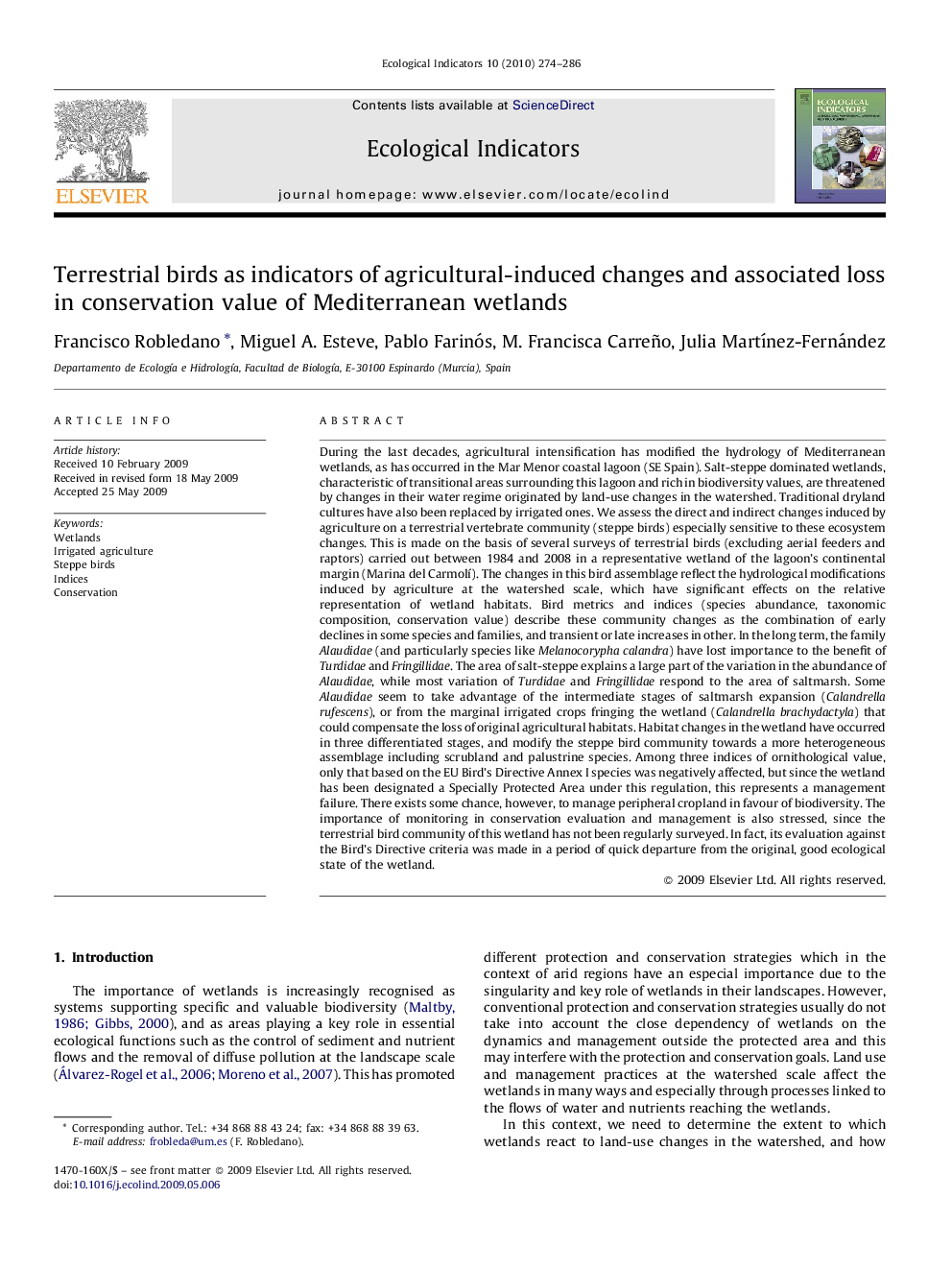| Article ID | Journal | Published Year | Pages | File Type |
|---|---|---|---|---|
| 4374283 | Ecological Indicators | 2010 | 13 Pages |
During the last decades, agricultural intensification has modified the hydrology of Mediterranean wetlands, as has occurred in the Mar Menor coastal lagoon (SE Spain). Salt-steppe dominated wetlands, characteristic of transitional areas surrounding this lagoon and rich in biodiversity values, are threatened by changes in their water regime originated by land-use changes in the watershed. Traditional dryland cultures have also been replaced by irrigated ones. We assess the direct and indirect changes induced by agriculture on a terrestrial vertebrate community (steppe birds) especially sensitive to these ecosystem changes. This is made on the basis of several surveys of terrestrial birds (excluding aerial feeders and raptors) carried out between 1984 and 2008 in a representative wetland of the lagoon's continental margin (Marina del Carmolí). The changes in this bird assemblage reflect the hydrological modifications induced by agriculture at the watershed scale, which have significant effects on the relative representation of wetland habitats. Bird metrics and indices (species abundance, taxonomic composition, conservation value) describe these community changes as the combination of early declines in some species and families, and transient or late increases in other. In the long term, the family Alaudidae (and particularly species like Melanocorypha calandra) have lost importance to the benefit of Turdidae and Fringillidae. The area of salt-steppe explains a large part of the variation in the abundance of Alaudidae, while most variation of Turdidae and Fringillidae respond to the area of saltmarsh. Some Alaudidae seem to take advantage of the intermediate stages of saltmarsh expansion (Calandrella rufescens), or from the marginal irrigated crops fringing the wetland (Calandrella brachydactyla) that could compensate the loss of original agricultural habitats. Habitat changes in the wetland have occurred in three differentiated stages, and modify the steppe bird community towards a more heterogeneous assemblage including scrubland and palustrine species. Among three indices of ornithological value, only that based on the EU Bird's Directive Annex I species was negatively affected, but since the wetland has been designated a Specially Protected Area under this regulation, this represents a management failure. There exists some chance, however, to manage peripheral cropland in favour of biodiversity. The importance of monitoring in conservation evaluation and management is also stressed, since the terrestrial bird community of this wetland has not been regularly surveyed. In fact, its evaluation against the Bird's Directive criteria was made in a period of quick departure from the original, good ecological state of the wetland.
